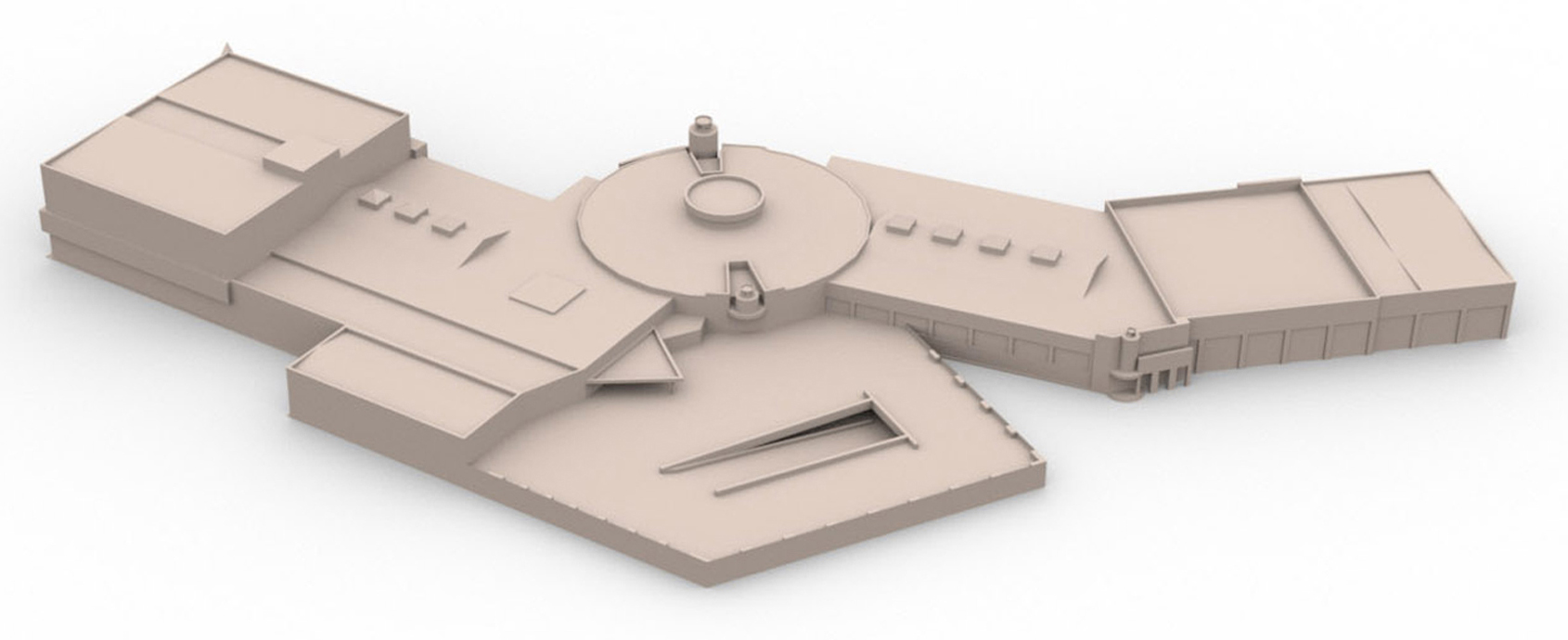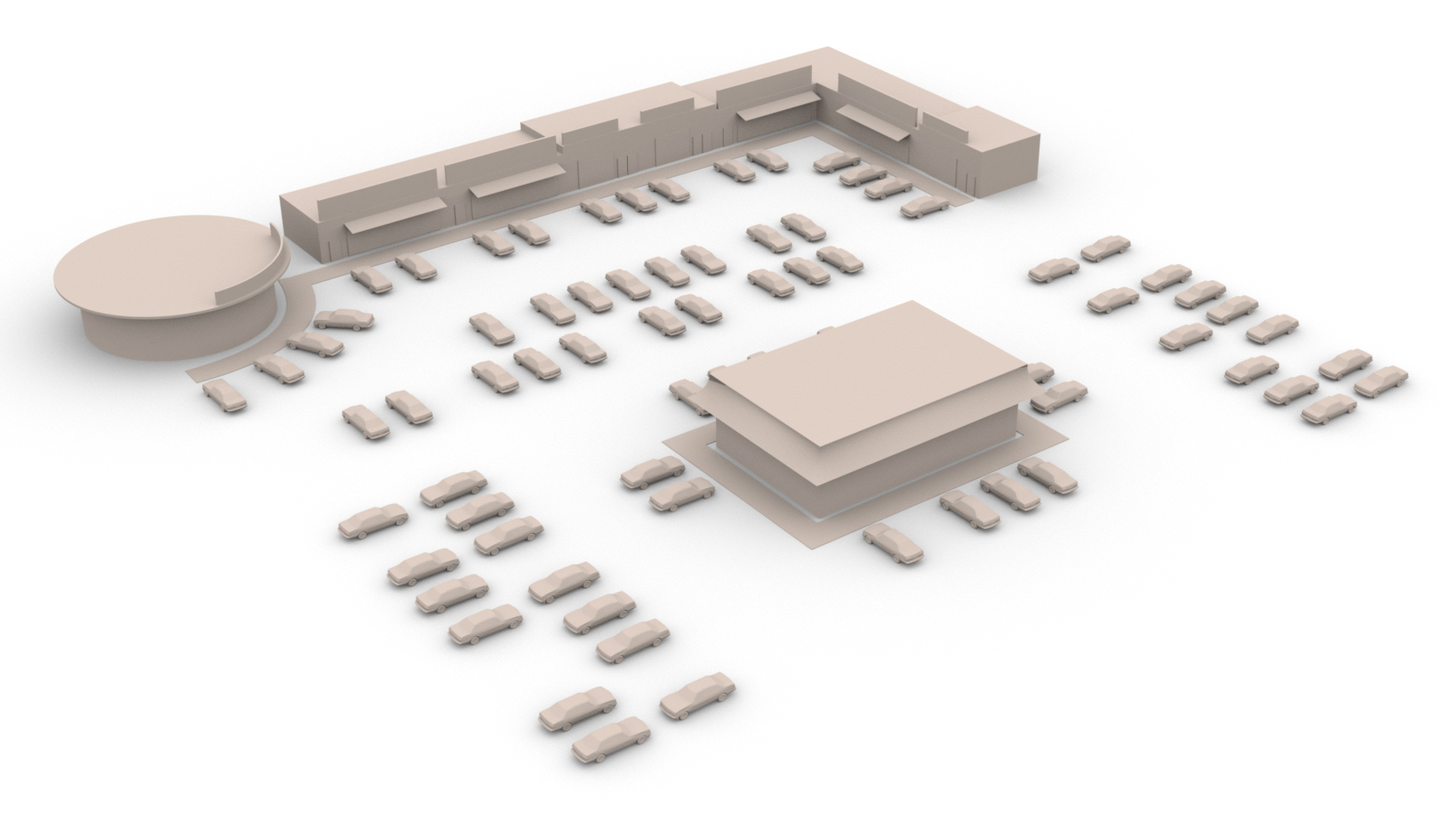Retail and commercial services
Retail and commercial services are urban objects, designated for the purpose of housing economic activities that fulfil the role of goods and commercial service provision. Examples include shops, restaurants, credit unions, etc.
Contents
Description
Retail and commercial services activities are very important drivers of economic activity within urban areas. Retail services predominantly become clustered within a specific area, offering wide ranging services to consumers, and attracting significant footfall. Retail services which may be offered will range from the sale and supply of consumer goods and products, to the provision of social activities such as bars and restaurants. Retail and services activities will typically occur in one of three primary contexts:
| Retail type | Description | Icon |
|---|---|---|
| High street | Where the main commercial or retail activity occurs in a city or urban area (larger cities may have a high street for each district or quarter) | |
| Shopping centres | Consist of a complex of shops, restaurants and other businesses in one or more connected buildings |  |
| Out of town retail parks | A group of large warehouses and superstores (often selling bulky and white goods) in edge of centre or outside urban areas, with a large quantum of parking space for customers. |  |
These contexts within which retail and commercial services activities occur represent three different urban characters. They are representative to facilitate the reader in determining what applies to his/her unique and specific situation.
In the text below, any of these three icons will be used whenever an observation is specific to one or more of the above mentioned archetypes.
Functions
Social
The retail sector plays a major role in attracting people to cities, towns and villages, thus contributing to the overall economic vitality of those centres and supporting their role as centres of social and business interaction in the community. Retail use facilitates consumer spending which is an important component of a developing economy (see economic function below). This land use is also strongly grounded in social interaction and socio-cultural needs. A key component of a high quality urban environment is the provision of a range of high quality easily accessible retail facilities.
Retail planning guidance advocate a sequential approach to locate retail development in the city/town centre, and only to allow retail development in edge of centre or out of centre locations where all other options have been exhausted. The number of retail outlet per 100 households or the quantum of retail floor space per capita is a common indicator of retail performance used by urban planners[1].
A number of studies demonstrate the social function of shops. For example, in the Netherlands:
In the run-up to the opening of the 2600th post office, PostNL carried out research into the social function of local shops. The research...has shown that people are still receiving personal service quite literally around the corner from where they live. For almost a quarter of the respondents social contact was the main reason for continuing to visit the shop around the corner. Despite the increasing popularity of internet shopping, 98% of Dutch people still find it important that there are shops close to where they live. Almost everyone visits a local shop at least once a week. A quarter of those questioned even visit on a daily basis. The fact that the shop is close by was given as the main reason for the number of visits (56%). Where daily grocery shopping in particular is concerned, the Dutch still prefer using supermarkets or specialist shops. The atmosphere (22%), as well as being able to view the range of goods (62%) and being able to touch them (55%) were determining factors[2].
The retail core of urban locations can very often draw/attract large numbers of people along the shopping streets and within the stores and shopping centres. This heavy footfall and large crowds has obvious implications from a safety and security perspective.
Economic
The retail and services industry is one of the largest private-sectors in terms of jobs and GDP, but the economic impact of the retail industry extends beyond the industry itself. First of all, retail and services require inputs from various other sectors such as real estate, finance, marketing, transportation, wholesale trade for its operations (the secondary economic impact). Additionally, employees and owners will generate economic spin off as consumers of goods and services (the induced economic effects). These economic impacts can be estimated with the help of economic tools/techniques.
In terms of the location of retail space, the urban planner needs to ensure retail use is located in the appropriate location and having regard to population catchment and adjoining uses. From an economic perspective, urban planners think along the lines of locating retail to be conducive to urban sustainability, encourage investment and growth, and reaching population targets for the city (good retail is a good draw towards successful and competitive mixed-use urban commercial centres). A sequential approach is promoted: city centre, edge of centre, out of town retail space. Spillover damage by out of town locations, monopolistic dominance of too-large centres relative to their catchment, floor space caps to control retail development, etc., are all important considerations for the urban planner.
Retailers have to deal with a wide array of issues and problems in terms of security threats and their economic impact. In economic terms, shoplifting is widely considered to be one of the most serious of these threats. Moreover, retailers spent billions on loss prevention, and these costs are steadily increasing worldwide.
Preventive measures such as surveillance, physical security, etc. reduce the costs of retail crime, but demand significant investments. Apart from the more traditional security measures, the ‘designing out’ or 'sustainable design' approach in the earliest stages in the planning process can be in the long run an effective measure from an economic point of view to prevent security threats and reduce the economic damage[3].
Mobility
An important transportation issue concerning retail is retail logistics. Retail logistics includes transportation of goods to the points of retail sales and storage there. It also covers additional activities for door delivery of goods to the customers.
Consider: Control of traffic such as delivery vehicles - to off-peak times. Also, their interaction and relationship with pedestrians/shoppers in crowded shopping streets.
In these open retail areas, shoppers may dissipate in all directions in the event of an incident... no organised evacuation.
Safety
Most generic safety requirements are also of importance for retail and commercial services. As commercial venues can sometimes be very busy, the ability for the people to get to safety in time in the event of an incident (Evacuation Management) can be an important safety aspect.
Security Issues
Commercial areas are more prone to certain types of crime than other urban objects.
- Commercial burglary: Even though there are considerably fewer retail burglaries than residential burglaries, the risk of retail burglary per number of premises is very high. For example, in 2012, 12 percent of wholesale and retail establishments were burgled[4], compared with just 2 percent of residences[5]. As for this form of crime the measures in a context of urban planning are very limited, it is not included as a security issue for the urban planner.
- Shoplifting is a serious concern for shops. A british survey found that stores lose as much to burglars as they do to shoplifters.[6] As this problem is highly unrelated to the shape of the built environment, it is not included as a security issue for the urban planner.
- Vandalism[7]
- Graffiti: The use of metal roller-shutters have proven effective against burglary, but can have a negative effect on the street scene, and are susceptible to graffiti[8].
- Vehicle theft[7][9]: The use of (particularly large, unattended) parking lots can attract vehicle thieves.
- Ram raid[10]
- Robbery[11]: The common presence of ATM machines in commercial areas can attract robbers who rob people who just withdrew money, or they can force people to withdraw money and then rob them of it.
- Pickpocketing can be a problem in commercial areas, especially when they are busy and distractive.
Measures
- Directing traffic flows can be effective against ram-raid. Particularly the use of vehicle security barriers, such as Bollards and the use of indirect routes[12] (link) reduce the accessibility of the store for ramming it with vehicles.
- Target hardening can greatly increase the effort needed for criminals to enter the object and thereby reduce the attractiveness of an object. The use of rollershutters can reduce the risk of burglary. It will also increase the risk of graffiti.
- Surveillance can be effective against security issues, but can incur high costs if implemented as dedicated observers, either on location or remote. A more natural form of surveillance is surveillance by the inhabitants (also known as 'natural surveillance'), provided that the commercial area is inhabited and the inhabitants have a good surveillability.
- Reaction force is needed to make detection measures, such as alarms or surveillance effective.
- Target removal can be effective with each of above-mentioned security issues.
- Commercial burglary can be reduced by providing means of easily removing the valuables from the store at night.
- Vandalism and graffiti can be reduced by avoiding features that could attract these forms of crime from the area, such as blank and reachable walls or easily accessible and damaged street furniture or bus shelters.
- Facilitating compliance can prevent littering by providing ample waste bins, which can act as a crime motivator for vandalism, graffiti and other crimes.
- Ownership is an important aspect in the prevention of unauthorized entry by creating a clear distinction between public and private space. By providing a clear distinction between public and private property, unwanted entry is prevented which reduces the number of opportunities for crime.
- Maintenance and designing for easy maintenance can be used as the removal of a crime motivator, as deterioration can be an incentive to various forms of crime.
- Removal of crime motivators ensures the separation of perpetrators , their incentives and opportunities, Such as the prevention of blank, reachable and highly visible walls to prevent graffiti.
Footnotes and references
- ↑ IRELAND: Department of Environment, Community and Local Government (2012) Guidelines for Planning Authorities Retail Planning p.30
- ↑ NETHERLANDS: The research into the social and community relevance of local shops was carried out by ISIZ and Stadspeil using a representative sample survey of 1298 respondents with an equal male/female ratio. Available at: http://www.postnl.com/press/586834/The_social_function_of_the_local_shop_in_the_year_2011.aspx
- ↑ In general, these measures demand larger investments than traditional security measures, but at the same time they are able to avoid future costs due to the long-term prevention of crime.
- ↑ http://www.homeoffice.gov.uk/publications/science-research-statistics/research-statistics/crime-research/crime-business-prem-2012/crime-against-businesses
- ↑ http://www.ons.gov.uk/ons/dcp171778_296191.pdf
- ↑ Clarke Ronald V., Burglary of Retail Establishments, Problem-Oriented Guides for Police Series, Guide No. 15
- ↑ 7.0 7.1 Mirrlees-Black Curiona and Ross Alec, Crime against retail and manufacturing premises: findings from the 1994 Commercial Victimisation Survey, Home Office Research Study 146, copyright 1995, ISBN 1 85893 554 7
- ↑ Home Office, Safer Places. The planning system and crime prevention, 2004
- ↑ Clarke Ronald V., Thefts of and From Cars in Parking Facilities, Problem-Oriented Guides for Police Series, Guide No. 10
- ↑ Jacques Christopher, Ram raiding: the history, incidence and scope for prevention, Crime at work: studies in security and crime prevention
- ↑ Scott Michael S., Robbery at Automated Teller Machines, Problem-Oriented Guides for Police Series, Guide No. 8
- ↑ CPNI, Integrated Security. A Public Realm Design Guide for Hostile Vehicle Mitigation, Version 1, 2011, pp 21
